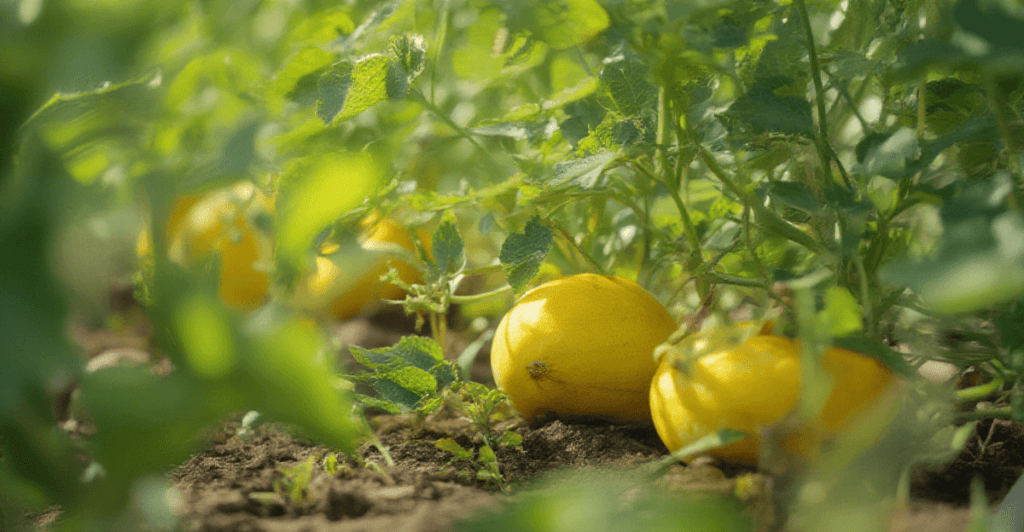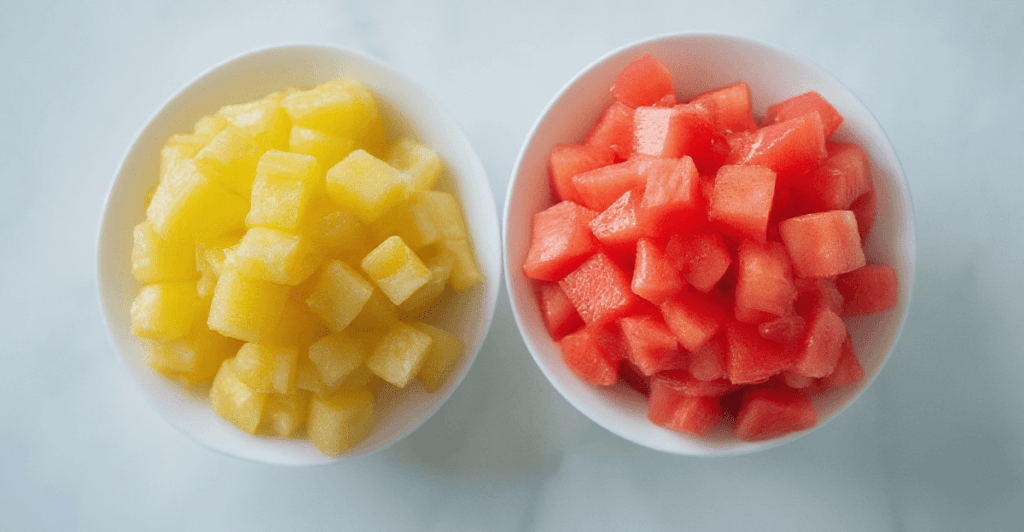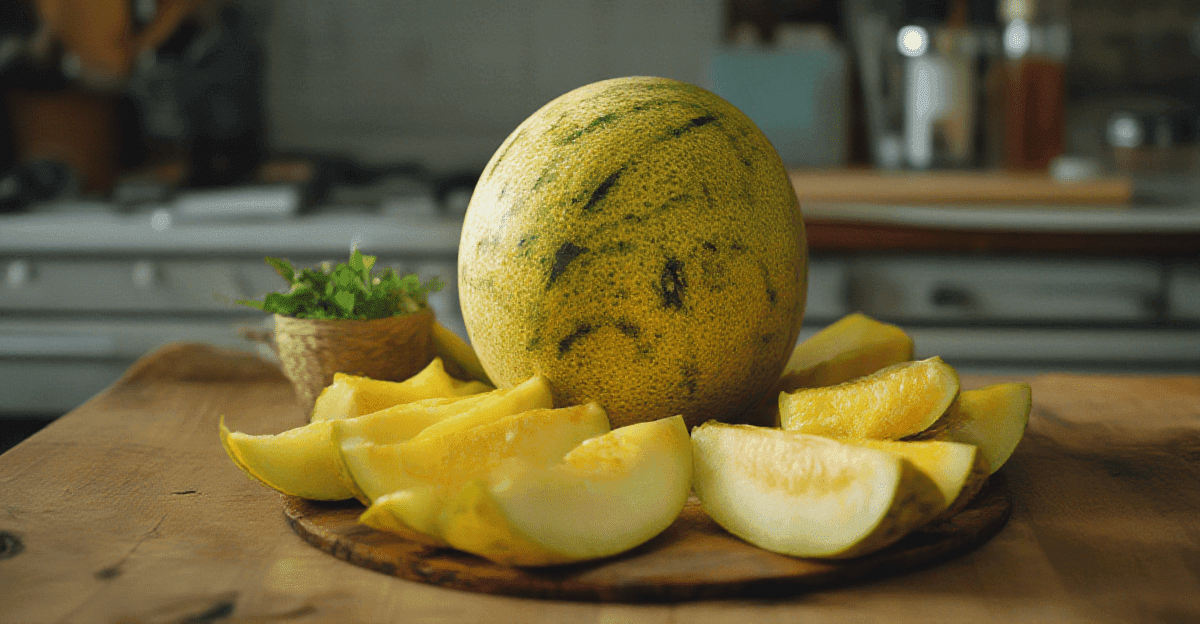Introduction to Yellow Watermelon
Watermelons are one of the most loved fruits around the world, known for their juicy red flesh and refreshing sweetness. However, not all watermelons are red. In recent years, yellow watermelons have gained attention, sparking curiosity among consumers. One common question people ask is, “Is a yellow watermelon natural, or is it genetically modified?”
Yellow watermelons may surprise those accustomed to red-fleshed varieties, but they are not a product of artificial manipulation. Instead, they are a naturally occurring variation of the traditional watermelon, with roots that go back thousands of years. These watermelons are becoming increasingly popular due to their unique taste, striking appearance, and health benefits.
In this article, we will explore the origins of yellow watermelons, their nutritional value, differences from red watermelons, and address whether they are genetically modified. By the end, you’ll have a clear understanding of what makes yellow watermelons a natural marvel.
The Natural Origins of Yellow Watermelons

Yellow watermelons may seem unusual, but they are completely natural. These fruits have been around for thousands of years, even before the red watermelons became popular. Unlike red watermelons, which are rich in a pigment called lycopene, yellow watermelons lack this compound. Instead, they have beta-carotene, which gives them their bright yellow color.
Genetic Origins
The yellow watermelon is not a modern invention. In fact, it has been grown naturally in Africa for centuries. Over time, watermelons spread to other parts of the world, and farmers began to grow different types. Some watermelons developed a yellow flesh due to natural mutations. These mutations occurred without any human interference.
To explain simply, the genetics of watermelons can change naturally, just like how some flowers have different colors. Yellow watermelons are just another natural variety of this amazing fruit. They were not made in a lab or altered with chemicals.
How Yellow Watermelon Differs from Red Watermelon
While yellow and red watermelons may look similar on the outside, they have some key differences on the inside:
- Color: Red watermelons get their color from lycopene, while yellow watermelons get their color from beta-carotene.
- Taste: Yellow watermelons are often described as sweeter and more tropical. Some people say they taste a little like honey or mango.
- Nutritional Content: Both types are healthy, but they offer slightly different nutrients, which we will cover later.
So, even though they are a bit different, yellow watermelons are still natural and belong to the same watermelon family.
Are Yellow Watermelons Genetically Modified?
One common question people ask is, “Are yellow watermelons genetically modified?” The answer is no. Yellow watermelons are not genetically modified organisms (GMOs). Let’s take a closer look to clear up this confusion.
What is GMO?
GMO stands for Genetically Modified Organism. It refers to plants or animals that have been changed in a lab to have certain qualities. For example, some GMO crops are made to resist pests or grow faster.
However, yellow watermelons are not created in this way. They are grown naturally through selective breeding. This process involves farmers choosing plants with certain features, like sweetness or color, and growing them over many generations. It’s a completely natural method and has been used for thousands of years.
Clarifying Yellow Watermelon’s Origin
Scientists have studied yellow watermelons and found that they are not man-made. Their yellow color comes from natural genetic traits passed down through the years. Simply put, yellow watermelons are a result of nature, not a laboratory.
If you see a yellow watermelon at the store, you can enjoy it without worry. It’s just a different variety of watermelon, like how apples come in red, green, or yellow.
Nutritional Value of Yellow Watermelon
Yellow watermelons are not only beautiful to look at, but they are also packed with nutritional benefits. Just like red watermelons, they are hydrating, low in calories, and full of important vitamins and minerals. Let’s break it down so you can see why yellow watermelon is a healthy choice.
Nutrients and Health Benefits
Yellow watermelons are a natural source of:
- Vitamins: They contain vitamin A and vitamin C, which help boost your immune system and keep your skin healthy. Vitamin A, in particular, comes from beta-carotene, the compound that gives the fruit its yellow color.
- Hydration: With over 90% water content, yellow watermelon helps keep you hydrated, especially on hot days.
- Low Calories: Yellow watermelon is naturally low in calories, making it a guilt-free snack. One cup of yellow watermelon has only about 45 calories.
- Antioxidants: These help protect your body from harmful free radicals. Beta-carotene acts as a strong antioxidant, promoting good eye health and reducing inflammation.
Yes, yellow watermelons are completely natural. They offer a deliciously sweet way to enjoy a healthy treat while providing essential nutrients. Whether you’re craving a refreshing snack or looking for a boost of vitamins, this vibrant fruit is an excellent choice.
Unique Compounds in Yellow Watermelon
The biggest difference between red and yellow watermelons comes from their color compounds.
- Beta-Carotene: In yellow watermelon, beta-carotene is the key compound. It gives the fruit its golden-yellow color and turns into vitamin A in your body. Vitamin A is essential for eye health, strong immunity, and healthy skin.
- Lycopene: Red watermelons, on the other hand, contain lycopene, which gives them their red color.
Both types of watermelons are nutritious, but yellow watermelons offer unique health benefits thanks to beta-carotene. So, if you’re looking to switch things up, yellow watermelon is a fun and healthy alternative to red watermelon.
Taste and Culinary Uses of Yellow Watermelon

Yellow watermelon doesn’t just look unique—it also has a slightly different taste! If you’ve never tried one before, you might be delighted by its sweeter, honey-like flavor and its versatility in the kitchen.
Flavor Profile
Yellow watermelons are naturally sweeter than the red variety. Many people describe the taste as having a hint of honey or mango. This makes yellow watermelon a perfect summer fruit for those who love sweet, refreshing flavors.
Even though the flesh is a different color, yellow watermelon still has the crisp, juicy texture that everyone loves.
Popular Recipes and Uses
You can enjoy yellow watermelons on their own or use them in creative ways. Here are a few simple ideas:
- Fresh Slices: Enjoy yellow watermelon as a snack. Simply slice it up and eat it fresh.
- Fruit Salad: Mix yellow watermelon with red watermelon, berries, and other fruits for a colorful salad.
- Smoothies: Blend yellow watermelon with ice, mint, and a splash of lime juice for a refreshing drink.
- Juices: Yellow watermelon makes a delicious juice that’s naturally sweet and hydrating.
- Desserts: Add it to frozen popsicles, sorbets, or even use it as a topping for yogurt.
Because of its unique sweetness, yellow watermelon works well in both sweet and savory dishes. You can also use it in fruit skewers or as a garnish for summer drinks.
Yellow watermelons are not just natural—they’re also versatile, healthy, and incredibly tasty. They are a great way to add color, flavor, and nutrients to your meals.
Growing and Availability of Yellow Watermelon
Yes, yellow watermelons are completely natural. Farmers grow them in many parts of the world, and they also occur naturally due to a genetic variation that affects the flesh color.While yellow watermelons may seem rare to some, they are becoming increasingly common as more farmers cultivate them.
Here, we will explore where farmers grow yellow watermelons and when you can find them in stores or markets.
Where Do Yellow Watermelons Grow?
Farmers grow yellow watermelons in warm climates with plenty of sunshine. Like regular red watermelons, they need hot weather and well-drained soil to grow properly. Yellow watermelons naturally grow in several main regions, including:
- Africa: Watermelons, including yellow ones, were first grown in Africa thousands of years ago.
- Asia: Countries like Japan and China grow yellow watermelons for both local and international markets.
- Farmers in the United States grow yellow watermelons in states like Florida, Texas, and California, where the climate is ideal for watermelon cultivation.
If you live in a warm region, you can even grow yellow watermelons in your garden. All you need is good soil, water, and plenty of sunshine!
When are Yellow Watermelons in Season?
Yellow watermelons are usually in season during the summer months. Depending on where you live, you can find them between May and September. This is when watermelon plants grow best because they need hot temperatures.
In some areas, you may also find yellow watermelons outside of the summer season. Thanks to modern farming and greenhouse techniques, farmers can grow them year-round. However, during the peak summer months, yellow watermelons are more widely available, fresher, and often more affordable.
If you’re wondering where to buy yellow watermelon, check local grocery stores, farmer’s markets, or specialty fruit shops. You can also find them online or ask local farmers if they grow this natural variety of watermelon.
FAQs
Here are some simple answers to common questions people ask about yellow watermelons.
Is it okay to eat a yellow watermelon?
Yes, it is perfectly okay to eat a yellow watermelon. Yellow watermelons are a natural variety of watermelon with a sweet, refreshing taste. They are just as nutritious as pink watermelons and contain vitamins, antioxidants, and hydration benefits.
How rare is a yellow watermelon?
Yellow watermelons are less common than the traditional pink or red varieties, but they are not extremely rare.
Do yellow and pink watermelon taste the same?
Yellow and pink watermelons have similar sweetness levels, but yellow watermelons often have a slightly sweeter, honey-like flavor. The taste can vary depending on the variety and ripeness, but the differences are subtle.
Conclusion
Yellow watermelons are a natural and exciting variety of the classic watermelon we all know and love. Despite their unusual appearance, they have been around for thousands of years and occur naturally due to the presence of beta-carotene, which gives them their bright yellow color.
Unlike genetically modified fruits, yellow watermelons are completely natural and safe to eat. They are not only beautiful but also nutritious. Packed with vitamins, antioxidants, and high water content, they are an excellent choice for staying hydrated and healthy.
Yellow watermelons offer a sweeter, tropical flavor compared to red watermelons, making them perfect for snacks, drinks, and creative recipes. While they may not be as common as red watermelons, they are becoming easier to find, especially during summer.
In summary, yellow watermelons are natural, delicious, and nutritious. If you spot one at the market, don’t hesitate to give it a try—you might just fall in love with its sweet, honey-like taste!

